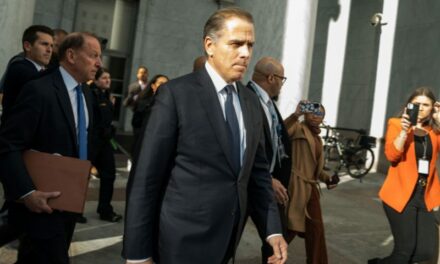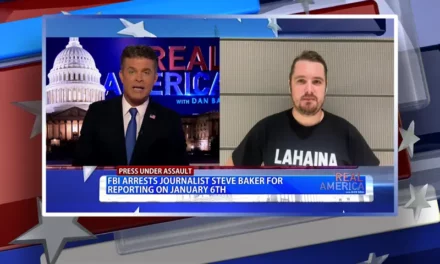We support our Publishers and Content Creators. You can view this story on their website by CLICKING HERE.
OAN’s James Meyers
10:04 AM – Thursday, June 27, 2024
The Supreme Court (SCOTUS) on Thursday officially ruled that abortions can continue to be performed in Idaho in the case of medical emergencies, just one day after inadvertently posting the opinion briefly before deleting it off their website.
As a result, the cases will now go to a lower court for further evaluation, but the decision by the high court ensures that Idaho doctors can continue to perform emergency abortions for the time.
On Wednesday, the court mistakenly posted a draft of the opinion on the court’s website, before it was taken down.
The ruling stems from cases, Moyle v. U.S. and Idaho v. U.S., which had national attention following the Supreme Court’s 2022 ruling that overturned Roe v. Wade.
In an agreement, Justice Amy Coney Barrett, joined by Chief Justice Roberts and Justice Brett Kavanagh, agreed with the highly unusual move by the Court “because the shape of these cases has substantially shifted.”
However, Justice Samuel Alito, joined by Justice Clarence Thomas, called the Court’s decision “baffling.”
“Recognizing the flaws in the Government’s theory and Idaho’s ‘strong’ likelihood of success, this Court stayed the preliminary injunction pending appeal on January 5. And, wisely or not, the Court also took the unusual step of granting certiorari before Idaho’s appeal was heard by the Ninth Circuit. Now the Court dismisses the writ and, what is worse, vacates the stay,” Alito wrote.
“This about-face is baffling,” he continued. “Nothing legally relevant has occurred since January 5. And the underlying issue in this case—whether EMTALA requires hospitals to perform abortions in some circumstances—is a straightforward question of statutory interpretation. It is squarely presented by the decision below, and it has been exhaustively briefed and argued.”
“Altogether, we have more than 1,300 pages of briefing to assist us, and we heard nearly two hours of argument,” he added.
“Everything there is to say about the statutory interpretation question has probably been said many times over. That question is as ripe for decision as it ever will be. Apparently, the Court has simply lost the will to decide the easy but emotional and highly politicized question that the case presents. That is regrettable,” he said.
Additionally, Justice Kentaji Brown wrote in a separate statement that she concurred with the high court’s decision to lift the stay, but did not agree with its decision to dismiss the cases as the Supreme Court should not have accepted them to begin with.
“This months-long catastrophe was completely unnecessary. More to the point, it directly violated federal law, which in our system of government is supreme,” Jackson wrote.
Meanwhile, Idaho’s new Defense of Life Act makes it illegal for any medical provider to perform an abortion with exceptions of rape, incest, or the life of mother is in danger.
The Justice Department has argued that The Potato State’s law does not go far enough to allow abortions in more medical emergencies.
The state had argued that “construing EMTALA as a federal abortion mandate raises grave questions under the major questions doctrine that affect both Congress and this Court.”
Supporters of the state’s abortion restriction accused the Biden administration of “subverting states’ rights,” citing the Dobb’s decision which allowed states to regulate abortion access.
Stay informed! Receive breaking news blasts directly to your inbox for free. Subscribe here. https://www.oann.com/alerts

 Conservative
Conservative  Search
Search Trending
Trending Current News
Current News 





